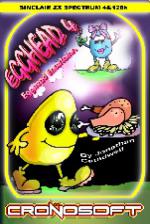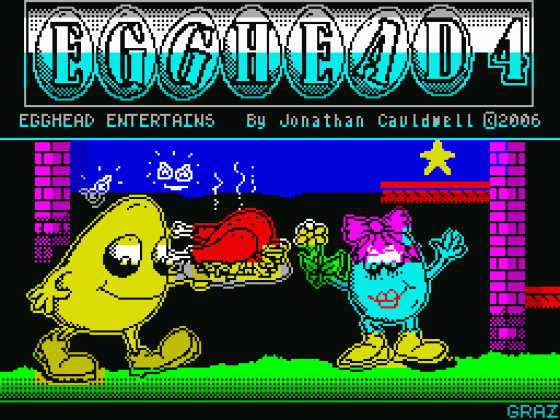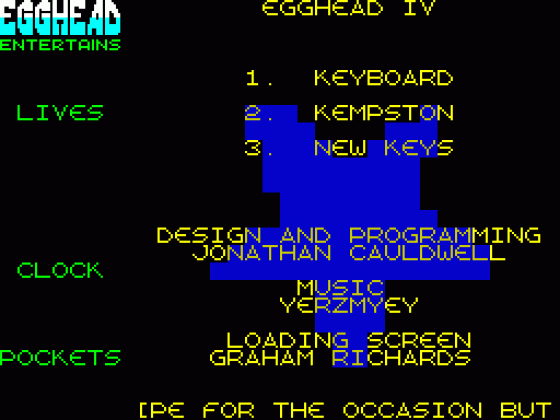
Micro Mart
 16th November 2006
16th November 2006
Categories: Retro Gaming
Author: Shaun Bebbington
Published in Micro Mart #928
It's your weekly retro round up again, brought to you by Shaun Bebbington.
Retro Mart: Enter The Shed
It's always good to see people being productive and industrious, especially when it results in a very fine electronic publication dedicated to the wondrous world of the Sinclair ZX Spectrum. The electro-zine in question is the aptly named ZX Shed, headed by Lee Fogarty (who featured in Jonathan Cauldwell's game Egghead IV: Egghead Entertains), and issue three is something that you won't want to miss.
Containing everything you'd expect from such a fan-based journal, with its own unique and snazzy design, this third outing takes a look at many of Cronosoft's latest games, as well as some forthcoming ones, and delves into the ancient art of low-level machine languages. Obviously, in this case, it's all about programming the Speccy in Z80 assembly.
There's so much more besides, that this is one of the most thoroughly enjoyable reads I've had in a long time, and certainly does more than fill the void left by the unfortunate end of Colin Woodcock's very fine ZXF.
For more information about The Shed, head over to www.worldofspectrum.org/forums; there you will find a sub-forum called ZX Shed. Click there and the first topic (which reads 'How to get it') will point you to the URL where you may obtain each download for the first three issues. You will need to be able to read PDF files, so if you haven't already got it, head over to www.adobe.com and download Adobe Reader. Just in case any of you're still using dial-up for Internet, issue three is over 7MB and the two earlier ones aren't any smaller. You have been warned.
XeO3 Updates
The development notes for XeO3 (or Xenon TriOxide) have been coming thick and fast. If you missed previous updates, the project is now being ported to the Commodore 64 and Speccy from the Commodore Plus/4. Mike Dailly is handling the Commodore versions, while Russell Kay works on the Speccy one. It has been decided that each version of the game will differ slightly in order to account for the host machine's strengths. For instance, the C64 has hardware sprites, whereas the Plus/4 and Speccy don't, and fast pixel scrolling on the Speccy isn't as easy as both Commodore machines, which have hardware scrolling. Mike is, therefore, implementing features that should push the C64 to its technical limits, and is aiming for the same on the Plus/4.
At the moment, Russell has a rough technical demo of the scrolling routine (for the Speccy) up on his tech weblog, and is working to implement the graphics shortly.
Mike is asking whether or not he should be selling this game on disk. He estimates that around 44% of people that frequent the likes of the www.lemon64.com forum use a real C64, and could obviously have the C64 version on one side of a floppy disk, and the Plus/4 version on the other, that's if both versions of the game will fit onto one side of a 5.25" floppy. Comments about this are welcome; would you buy this game when it is finished? Head over to www.xeo3.org and click the link to "Dailly's Techblog".
You can add your views and opinions anonymously, and while you're there, maybe pick up some programming tips too, as both techblogs have the source code with explanations.
Metroid C64
In another unrelated techblog, the C64 scener, known only as 'CBMeeks', is working on porting the classic NES game Metroid to the C64. So far, some of the graphics have been pixelated from the original, and there is a rough technical demo up, showing full-screen scrolling. There's a brief explanation of how the tiling engine will work, with some assembly code too. CBMeeks is planning to keep the game engine and graphics as close to the original game as possible, but obviously there will be compromises somewhere along the way, due to the differences in each machine's hardware.
codershangout.com/blogs/metroid is the place to be if you want to follow this project through to its (hopefully successful) conclusion.
This article was converted to a web page from the following pages of Micro Mart #928.







